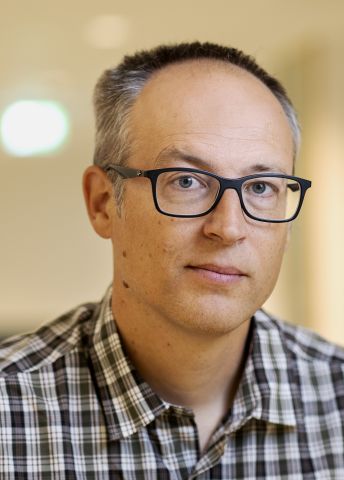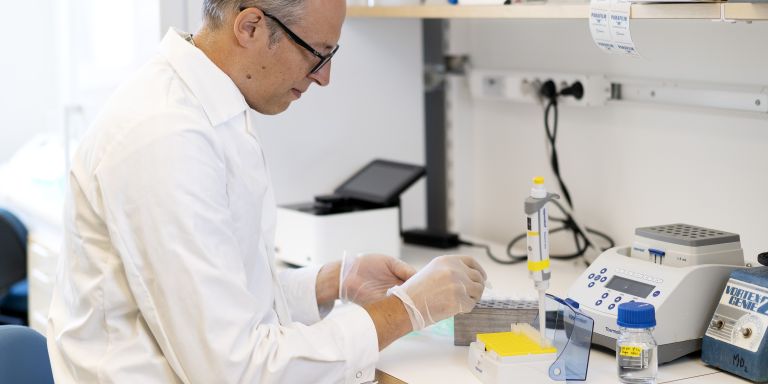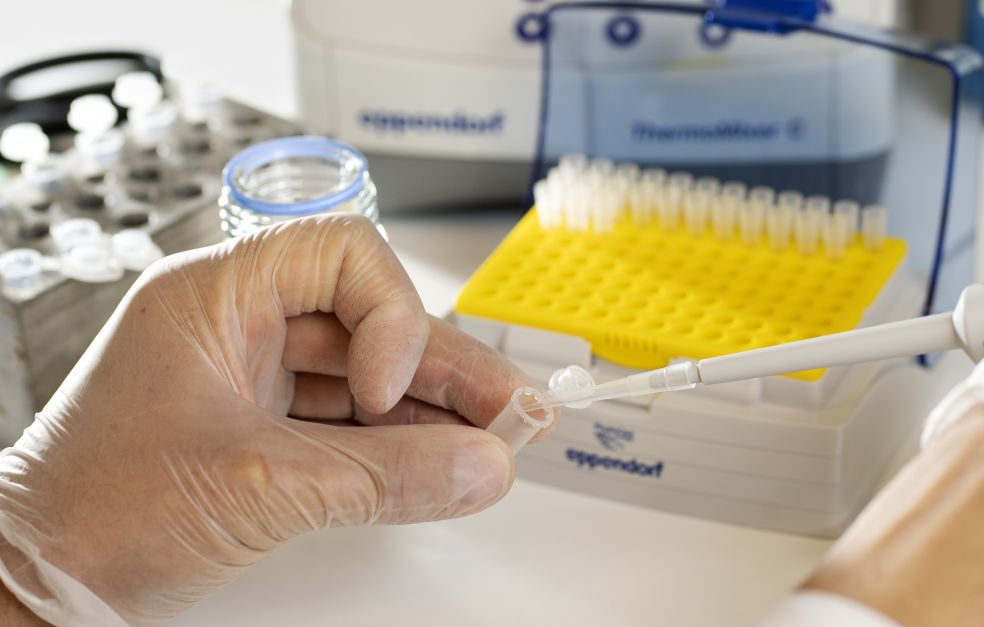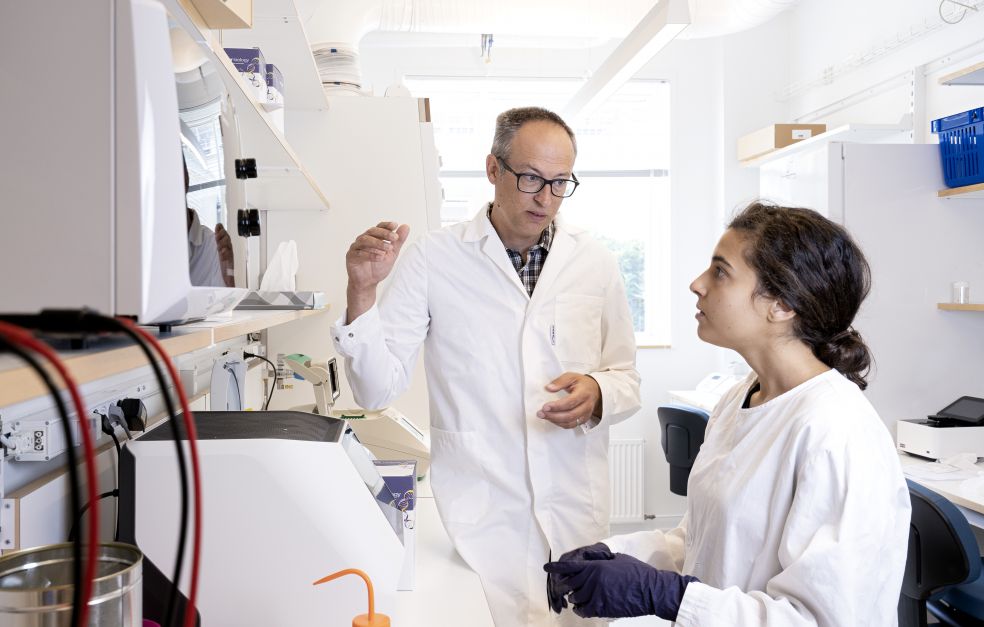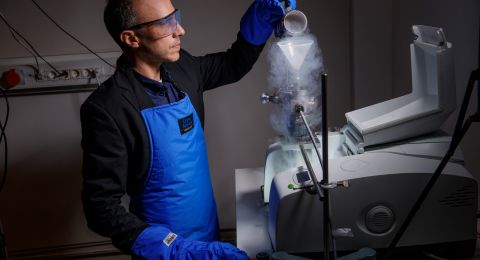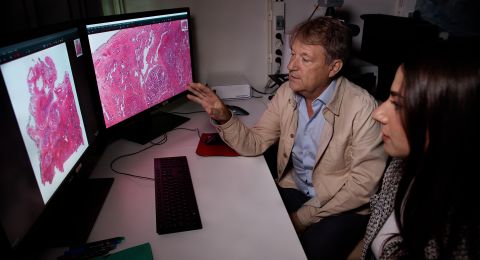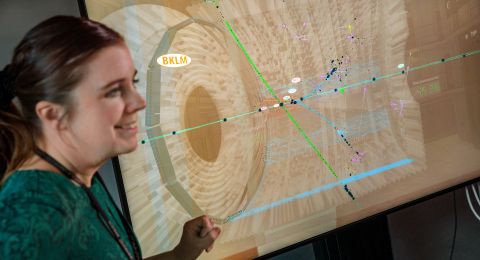He describes himself as an explorer on a journey to the uncharted regions of biology. Wallenberg Academy Fellow Martin Ott is mapping interaction between mitochondria and the surrounding cell. Having solved the riddle in yeast, it’s now time to get to grips with the human cell.
Martin Ott
Professor of Biochemistry and Molecular Biochemistry
Wallenberg Academy Fellow, prolongation grant 2019
Institution:
Stockholm University, University of Gothenburg
Research field:
Protein biogenesis
Mitochondria are the powerhouses of the cells. They convert the calories in the food we eat into energy to drive all the body’s biological processes. Despite the vital task they perform, mitochondria are not thought to have evolved in parallel with the other parts of the cell. Their origins are much more dramatic.
Evolutionary history
There are a number of theories, but the one with most adherents points to events occurring some two billion years ago. A primitive cell engulfed a living bacterium, not to consume it, but rather to force it to continue converting energy inside the primitive cell. This energy boost later enabled the primitive cell to evolve into more complex organisms, the birth of life as we know it today. Evidence of this event is that mitochondria have their own DNA, separate from that of the cells.
As time passed, the hostages adapted to their surroundings and developed a symbiotic relationship with the host cell. Many mitochondrial genes have now migrated to cell DNA, and the two work together to run a molecular machine called the respiratory chain.
The respiratory chain helps to generate the energy that is the hard currency of cellular life: adenosine triphosphate – ATP. Martin Ott has established how the coordination between the two partners works in yeast cells. Now he is moving on to human cells.
“Thanks to the advent of gene editing techniques such as Crispr/Cas-9 over the past five years, it is now possible to address this issue in human cells,” he says.
He gives two reasons why this research topic is important. One is that it is an important piece of the evolutionary puzzle; the other is that the cause of many diseases can be traced back to a defective metabolism, which may be due to poor communication between the mitochondrion and the cell.
“It’s important to gain an understanding of how the cell and mitochondrion communicate. Only when we understand these mechanisms will we be able to go on to create new effective therapies.”
Moving his entire lab
The step toward broader research is being taken at the same time as Ott is moving his research team from Stockholm University to Sahlgrenska Academy at the University of Gothenburg.
“Moving the whole lab and a family with three children is a big job. In many ways the move is quite a daunting prospect. But I’m sure it’ll be a good thing, not least from a scientific viewpoint.”
One of the main reasons for the move is to bring the research closer to health care. Most of Ott’s colleagues in Stockholm were specialized in structural biology and biophysics; most of those in Gothenburg are medical specialists.
“The grant enables me to pursue long-term initiatives in key areas where research often runs a high risk of failure. Knut and Alice Wallenberg Foundation plays a crucial part in Swedish basic research.”
“We’ll be able to test our theories in a medical context, with new approaches and new colleagues. As we move from yeast models to human cells, this may well be crucial,” Ott says.
New experimental systems are now being established in the lab in Gothenburg. The idea is that these will reveal exactly which proteins are involved in creating the protein complexes in the respiratory chain. The complexes are able to regulate ribosomal synthesis of the proteins included in the chain. The research team published the identity of those proteins in yeast as recently as 2020.
“Our hypothesis is that the same kind of regulation of gene expression is found in human cells. But we can’t be sure until we’ve demonstrated it.”
Uncharted territory
He describes his work as a journey into the unknown.
“It’s fantastic that there are still uncharted regions to be mapped by researchers like us. But this work will take time. It took us ten years to reach a successful outcome with yeast cells,” Ott explains.
The greatest difficulty is in developing the methods themselves. It takes time and close collaboration between the researchers. There are many blind alleys they have to navigate before they find the right way forward.
He elaborates:
“It’s real detective work, but I like the challenge of understanding complicated aspects of cause and effect. It’s really rewarding when you’ve wrestled with a problem for a long time, and suddenly the clouds disperse and you can see clearly.”
The knowledge they are producing offers great potential for new therapies, both for cancer and for multiple degenerative diseases. Cancer cells have found a means of controlling mitochondria to alter metabolism to their own advantage. If the researchers find out how they do it, the result may be new ways of arresting tumor growth.
The move to Gothenburg also offers an opportunity for Ott to pursue his interest in sport climbing. He has already discovered challenging walls to climb just fifteen minutes from the new laboratory.
“Climbing is a passion of mine – it allows me to be myself, not a father or a boss. But it does resemble research in the sense that you have to adopt a creative approach to find new solutions, and be stubborn enough to put them into practice.”
Text Magnus Trogen Pahlén
Translation Maxwell Arding
Photo Johan Wingborg
